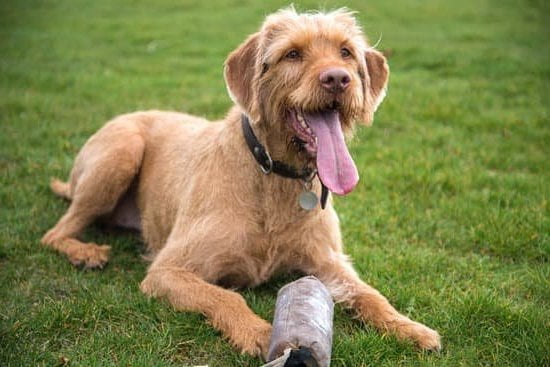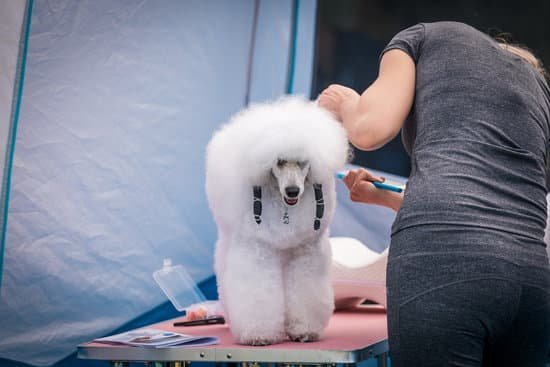Are you wondering how to train a dog not to be food crazy? Understanding the psychology behind food drive in dogs is essential in addressing this behavior. Some dogs may exhibit food obsession due to various factors such as genetics, past experiences, or even medical conditions. By delving into this aspect of canine behavior, pet owners can better tackle their furry friend’s food-related issues.
Food obsession in dogs can have negative consequences on their overall well-being. From aggressive behavior during meal times to weight management challenges, it is crucial to train a dog’s relationship with food. Establishing a feeding routine with consistent schedules and portion control is key to preventing food-related behavior problems and maintaining a healthy diet for your canine companion.
Utilizing positive reinforcement techniques is another effective way to address food craziness in dogs. By rewarding good behavior around food and providing praise, pet owners can encourage their furry friends to exhibit self-control and patience during meal times. Teaching basic commands like “leave it” and “stay” can also help manage food-related issues by promoting obedience and discipline in your dog’s behavior.
The Importance of Training a Dog’s Relationship With Food
Understanding Food Drive and Food Obsession
Food drive in dogs refers to their innate desire for food, which can vary from one dog to another. While it is natural for dogs to be interested in food, some may develop an unhealthy obsession with it. This can manifest in behaviors like begging, stealing food, guarding their food aggressively, or even becoming anxious or aggressive around meal times. Understanding the psychology behind food obsession is crucial in addressing and managing this behavior.
Effects of Food Obsession in Dogs
When a dog becomes overly fixated on food, it can lead to various negative consequences. Not only can it result in obesity and related health issues, but it can also cause behavioral problems such as resource guarding, aggression towards other pets or humans during meal times, and even disobedience due to their preoccupation with food. Training a dog’s relationship with food is essential not only for their physical well-being but also for their overall mental health and obedience.
How to Train a Dog Not to Be Food Crazy
To help your dog overcome food obsession, it is important to establish clear boundaries and expectations around meal times. This can be achieved through setting up a feeding routine that includes scheduled feeding times and portion control. Additionally, utilizing positive reinforcement techniques such as rewarding good behavior around food and teaching basic commands like “leave it” and “stay” can help manage their impulses.
Engaging your dog in interactive games and activities that redirect their focus away from food can also be effective in diverting their attention. By addressing the issue early on and seeking professional help if needed, you can train your dog not to be food crazy and ensure a healthier relationship with food.
Setting Up a Feeding Routine
Establishing a Consistent Feeding Schedule
One of the key steps in training a dog not to be food crazy is to establish a consistent feeding schedule. Dogs thrive on routine, so feeding them at the same times each day can help regulate their behavior around food. When dogs know when to expect their meals, they are less likely to exhibit anxious or obsessive behaviors related to food. Additionally, feeding your dog at regular intervals can also aid in digestion and prevent overeating.
Implementing Portion Control
In addition to setting up a feeding schedule, portion control is crucial in preventing food-related behavior problems in dogs. By measuring out the correct amount of food for each meal according to your dog’s size, age, and activity level, you can help prevent obesity and reduce the likelihood of your dog becoming overly fixated on food.
Avoid leaving excess food out for your dog to graze on throughout the day, as this can lead to unhealthy eating habits and reinforce their obsession with food.
Teaching Mealtime Manners
Another important aspect of establishing a feeding routine is teaching your dog proper mealtime manners. Encourage calm and polite behavior during meal times by requiring your dog to sit or wait before being fed. This helps instill patience and self-control in your canine companion, preventing them from becoming overly excited or frantic around food.
Consistency is key in reinforcing these mealtime manners, so be sure to practice them during every feeding session. By incorporating these strategies into your dog’s daily routine, you can effectively train them not to be food crazy and promote a healthier relationship with food for your furry friend.
Utilizing Positive Reinforcement
Positive reinforcement is a powerful tool when it comes to training a dog not to be food crazy. By rewarding good behavior with treats, praise, or other rewards, you can help your dog develop a positive association with food and learn self-control. Here are some effective ways to utilize positive reinforcement in your training:
- Use high-value treats: Find treats that your dog absolutely loves and use them specifically for training purposes. This will make the reward more enticing and reinforce good behavior.
- Timing is key: Make sure to give the reward immediately after your dog exhibits the desired behavior. This helps them make the connection between their actions and the reward.
- Be consistent: Consistency is crucial in positive reinforcement training. Set clear rules and expectations for your dog’s behavior around food and always reward them for following those rules.
In addition to using treats as rewards, don’t underestimate the power of praise and affection. Dogs thrive on positive attention from their owners, so verbal praise, petting, or a happy tone of voice can also be effective forms of reinforcement. Remember that every dog is different, so it may take some trial and error to figure out what motivates your furry friend the most.
Lastly, keep in mind that while positive reinforcement is an effective training method, it’s important to be patient and consistent in your efforts. Training takes time and effort, but with persistence and dedication, you can successfully teach your dog not to be food crazy using this approach. By creating a positive training environment and using rewards effectively, you can help your dog build healthy habits around food and improve their overall behavior.
Teaching Basic Commands
One of the key components in training a dog not to be food crazy is teaching them essential commands like “leave it” and “stay.” These commands can play a crucial role in managing your dog’s behavior around food and preventing unwanted incidents. “Leave it” teaches your dog to ignore or move away from items, including food, on command. This command can be especially useful when trying to prevent your dog from grabbing food off counters or tables.
Similarly, the “stay” command can help teach your dog impulse control around feeding time. By training your dog to stay in a specific location while you prepare their meal or while food is present, you are reinforcing calm behavior and reducing the likelihood of them becoming overly excited or aggressive towards food. Consistency and practice are key when teaching these commands, so be sure to reinforce positive behavior with rewards and praise.
Another important aspect of training basic commands is practicing them in various environments and situations. Dogs need to learn that these commands apply no matter what distractions are present, including tempting food smells. By gradually increasing the level of difficulty during training sessions, you can help your dog generalize these commands and use them effectively even when faced with high levels of food drive.
| Training Commands | Importance |
|---|---|
| Leave It | Teaches dogs to ignore or move away from items, including food |
| Stay | Reinforces impulse control around feeding time and calms behavior |
Food-Related Games and Activities
Another engaging activity is puzzle feeders or toys that dispense treats when manipulated correctly. These toys require your dog to work for their food, slowing down their eating process and providing mental enrichment. By incorporating these types of activities into your dog’s routine, you can help prevent them from obsessing over food and promote a healthier relationship with mealtimes.
In addition to games and activities, it is important to continue reinforcing positive behavior around food through consistent training methods. Always use positive reinforcement such as verbal praise, pets, or favorite toys when your dog displays good behavior related to food. With patience, consistency, and the right techniques, you can successfully train your dog not to be food crazy while strengthening the bond between you both.
| Interactive Games | Description |
|---|---|
| Find It Game | Hide treats for dogs to find using their sense of smell |
| Puzzle Feeders | Toys that dispense treats when manipulated correctly |
Addressing Resource Guarding
Resource guarding is a common behavior in dogs, especially those with food drive tendencies. It can manifest as possessiveness over their food bowl or treats, growling or snapping when approached while eating, or even guarding specific areas where food is present. Understanding and addressing resource guarding is crucial in training a dog not to be food crazy.
To manage and prevent aggressive behavior around food, here are some effective strategies that pet owners can implement:
- Desensitization and Counterconditioning: Gradually exposing the dog to triggers that lead to resource guarding, such as approaching their food bowl while they eat, and pairing it with positive experiences like receiving treats or praise. This helps the dog associate those triggers with something pleasant rather than feeling threatened.
- Trade-Up Method: Encouraging the dog to release the item they are guarding by offering a higher-value treat or toy in exchange. This teaches the dog that giving up their possession results in something better in return.
- Establishing Boundaries: Setting clear boundaries around mealtime and teaching the dog to wait patiently for their food. Implementing basic obedience commands like sit and stay before feeding can help reinforce these boundaries.
Additionally, consistency is key when working on resource guarding behaviors. Training sessions should be conducted regularly to reinforce positive interactions around food. It is important to be patient and understanding throughout this process, as addressing resource guarding can take time depending on the severity of the behavior. Seeking guidance from a professional dog trainer or behaviorist may also be necessary for severe cases of resource guarding.
By implementing these strategies and techniques consistently, pet owners can effectively manage and prevent aggressive behavior around food in their dogs, ultimately helping them overcome their food obsession tendencies and become well-balanced companions at mealtime.
Seeking Professional Help
When dealing with severe cases of food obsession in dogs, it is crucial to know when it’s time to seek professional help. Professional dog trainers or behaviorists can provide expert guidance and customized training plans to address the root causes of your dog’s food-related issues. They have the knowledge and experience to assess your dog’s behavior accurately and implement effective strategies to modify their food drive.
Professional help may be necessary when all other training methods have been unsuccessful in curbing your dog’s food obsession. A qualified trainer or behaviorist can offer advanced techniques and intensive support to help your canine companion overcome their food craziness. By working closely with a professional, you can better understand the underlying reasons for your dog’s behavior and develop a comprehensive plan to modify their relationship with food.
In conclusion, while many dog owners are capable of addressing mild cases of food-related behavior problems on their own using positive reinforcement and basic training techniques, more severe issues may require the expertise of a professional. Knowing how to train a dog not to be food crazy involves recognizing when your efforts are not producing desired results and being willing to seek outside assistance.
With the right support and guidance, you can help your furry friend develop a healthier relationship with food and enjoy a happier, more balanced life.
Frequently Asked Questions
How Do I Stop My Dog From Being So Food-Obsessed?
One way to stop your dog from being so food-obsessed is by establishing a consistent feeding schedule and providing enough mental and physical stimulation. Additionally, you can try using puzzle feeders or food-dispensing toys to make mealtime more engaging.
How Do You Train a Dog That Is Food Crazy?
When training a dog that is food crazy, it’s important to use high-value treats to grab their attention. Start by teaching basic commands like “sit” or “stay” and gradually increase the difficulty of tasks as the dog progresses. Consistency and positive reinforcement are key in this process.
Why Is My Dog So Crazy About Food?
Dogs are naturally inclined to be crazy about food due to their instincts as scavengers and hunters. In the wild, finding and consuming food is a matter of survival. Domestic dogs have inherited this trait, which explains their eagerness for mealtime. It’s essential to strike a balance between satisfying their hunger and preventing overindulgence through proper feeding practices.

Welcome to the blog! I am a professional dog trainer and have been working with dogs for many years. In this blog, I will be discussing various topics related to dog training, including tips, tricks, and advice. I hope you find this information helpful and informative. Thanks for reading!





